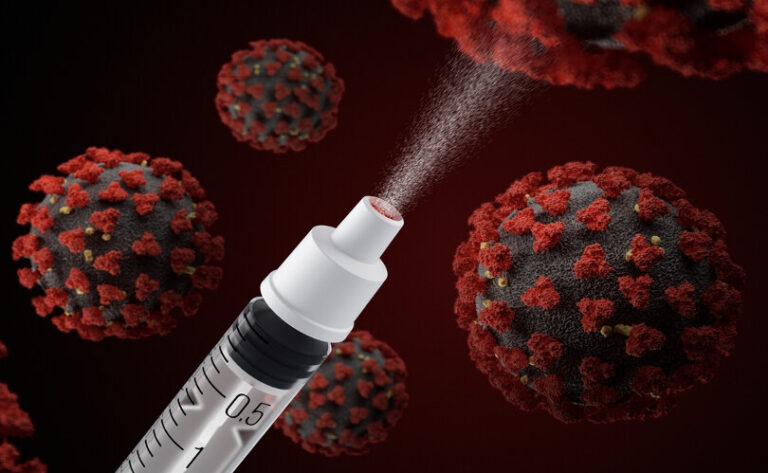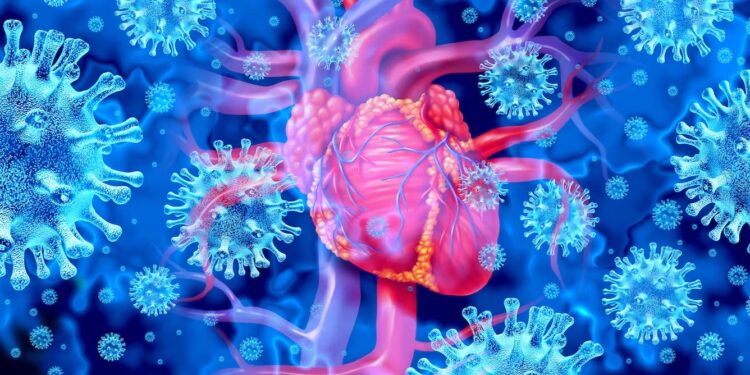New Report Raises Concerns That CDC Vaccine Adverse Event Reporting System Is Broken

A BMJ investigation found the CDC isn’t following its standards for maintaining VAERS, is missing safety signals, and essentially maintains two databases.
According to a new investigation, the nation’s primary early warning system for detecting potential vaccine safety issues is “overwhelmed,” raising concerns that the system is broken and isn’t being managed adequately by the Centers for Disease Control and Prevention (CDC).
The Vaccine Adverse Event Reporting System (VAERS) has received an unprecedented number of reports attributed to COVID-19 vaccines, according to a report published on November 10 by The BMJ, and there aren’t enough staff to meet the requirements for reviewing and following up on serious reports, including deaths. Furthermore, the investigation revealed that VAERS is not transparent, user-friendly, or responsive, and that the government essentially maintains two VAERS systems, only one of which is accessible to the public.
VAERS, which is co-managed by the FDA and the CDC, collects reports of symptoms, diagnoses, hospitalizations, and deaths following vaccination in order to capture post-marketing safety signals and determine if there are any unusual or unexpected reporting patterns for adverse events.
According to the CDC, healthcare providers are “strongly encouraged” to report any adverse event following vaccination to VAERS, even if it is unclear whether the vaccine is to blame. Vaccine manufacturers, on the other hand, are required by law to report any adverse events that “come to their attention.”
Although VAERS accepts reports from anyone, knowingly filing a false VAERS report is a violation of federal law that can result in a fine and imprisonment. This enables VAERS to function as a “early warning system to detect rare adverse events” while discouraging false reporting. Nonetheless, according to a Harvard Pilgrim Health Care study, VAERS only captures 1% of actual vaccine adverse events.
CDC Isn’t Investigating Serious Adverse Events for COVID-19 Vaccines
According to the CDC, prior to the pandemic, VAERS received over 48,000 reports of vaccine adverse events in 2019, with 85 to 90 percent of them being mild. The BMJ discovered a “unprecedented” 1.7 million adverse events were reported to VAERS following the COVID-19 vaccine rollout, with 1 million reported in 2021 and an additional 660,000 received thereafter. Almost one in every five cases met the criteria for a “serious” adverse event, and the majority of reports were linked to COVID-19 vaccines.
Serious adverse events include reports of death, hospitalization, life-threatening illness, permanent disability and/or prolonged hospitalization, and congenital anomalies, according to the VAERS Standard Operating Procedures for COVID-19. The CDC routinely requests medical records for all serious reports, including deaths, and adverse events of special interest may be subjected to a more in-depth clinical review.
If there is a significant increase in VAERS reports that require clinical review, standard operating procedures call for additional CDC Immunization Safety Office personnel to process cases. People who report to VAERS for “serious” events are supposed to receive email correspondence prompting them to provide updates, but The BMJ’s investigation reveals that these standards are not being met.
More than a dozen people were interviewed by the BMJ, including physicians and a state medical examiner, who filed VAERS reports for serious adverse events on behalf of themselves or patients and were either never contacted by the CDC or were contacted months later. Many people never received confirmation emails after submitting their reports. Similarly, if a condition was successfully treated or found to be unrelated to a vaccine, the database did not reflect this.
Dr. Patrick Whelan, a rheumatologist and researcher at the University of California-Los Angeles, filed a report in 2022 on behalf of his 7-year-old patient who had cardiac arrest and had to be intubated after receiving COVID-19 vaccination. According to Whelan, “nobody called or requested medical records.” The FDA stated that it followed up “soon after” receiving the report and requested several medical records. It went on to say that employees “might not reach out to medical providers unless they have specific questions about a case or VAERS report.”
Dr. James Gill, the state of Connecticut’s chief medical examiner and forensic pathologist, filed a VAERS report after a 15-year-old boy died suddenly in 2021 from stress cardiomyopathy after receiving his second dose of Pfizer’s COVID-19 vaccine. Despite the fact that he submitted a report online and received a temporary e-report number, the CDC never followed up. The CDC didn’t respond until Dr. Gill published the boy’s case report in the Archives of Pathology & Laboratory Medicine in February 2022, with a letter to the editor questioning Gill’s findings.
According to The BMJ, React19, a science-based non-profit comprised of 30,000 people injured by COVID-19 vaccines, reviewed 126 VAERS reports and discovered that 22% were never given a permanent VAERS ID, and 1 in 3 reports filed completely disappeared from the system.
Several reports, including six deaths, were filed on behalf of patients by an intensive care and emergency physician. According to The BMJ, she only received a request for medical records for one death and two hospitalized patients.
Other countries have acknowledged that deaths following COVID-19 vaccination were “likely” or “probably” related to mRNA vaccination, but the CDC has reviewed more than 20,000 preliminary death reports, significantly more than other countries, and has not attributed a single death to mRNA vaccines, according to The BMJ.
“A BMJ investigation found that the VAERS system isn’t working properly and that signals are being missed.” “I can confirm this observation as someone who has been studying and scrutinizing VAERS data for three years,” researcher Jessica Rose told The Epoch Times in an email. According to Ms. Rose, a VAERS expert with a doctorate in computational biology, these stories and experiences highlight the VAERS system’s flaws.
There Are 2 VAERS Databases–Only One Is Public
In contrast to how the US government handles adverse drug and device reaction reports, Jennifer Block, the report’s author, discovered that the FDA and CDC are essentially maintaining two separate VAERS databases—one for the public to access containing initial reports and a private system on the backend with updates, outcomes, and corrections.
The FDA division director in charge of VAERS is Dr. Narayan Nair. According to the BMJ, Dr. Nair stated during a December 2022 meeting that VAERS has two components: “the front-end system and the back end.” Dr. Nair admitted in a meeting with advocates that initial reports are never updated, so the public never sees an updated report on the front end.
Nonetheless, the FDA’s Adverse Event Reporting System for drugs, as well as the Medical Device Reporting System, keep a publicly accessible database that is updated. Only the VAERS system does not display updates publicly. An FDA spokesperson told The BMJ that if someone wants a full copy of their record or report, they must submit a formal request under the Freedom of Information Act.
Although regulatory officials told The BMJ that this was done to protect patient confidentiality, it means that patients, doctors, and other public database users do not have access to up-to-date or complete records.
In an email to The Epoch Times, VAERS expert and data analyst Albert Benavides stated that he was aware of two VAERS databases, but that the CDC isn’t publishing all legitimate reports it receives.
“What supersedes even two VAERS databases (internal and external) is the fact that VAERS does not publish all legitimate reports received,” Mr. Benavides went on to say. “The BMJ and the general public are only now becoming aware that only preliminary reports are published, despite the fact that VAERS continues to collect follow-up data, thus the two databases.” [The fact that] only preliminary reports are made public begs the question, “How many people have died in VAERS since then?” he added.
Following the publication of the Harvard Pilgrim Health Care study in 2011, the CDC stopped including follow-up data, according to Mr. Benevides.
Regulators Are Missing Safety Signals in VAERS
Because clinical trials involve studying products in a small number of selected individuals for a short period of time, some side effects may occur only after the products have been used by a larger and more diverse population for a longer period of time. Pharmacovigilance is the practice of monitoring the effects of pharmaceuticals and vaccines after they have been approved in order to detect, prevent, and evaluate previously unreported adverse reactions.
“Good pharmacovigilance requires prompt data collection, review by people with clinical expertise, and adequate follow-up,” said Marie Lindquist, former director of Sweden’s Uppsala Monitoring Centre, to The BMJ. “We know that even the best clinical trials won’t detect [rare adverse events].”
The risk of a rare blood clotting disorder associated with the Johnson & Johnson COVID-19 vaccine, manufactured by Janssen, for example, did not become apparent until it was approved. With only six cases reported, regulators halted its use in 2021 to investigate the reports, eventually linking the rare blood clotting disorder to the shot.
According to Ralph Edwards, former editor-in-chief of the International Journal of Risk and Safety in Medicine and author or co-author of over 400 scientific papers, VAERS is excellent for detecting adverse events that occur “very soon after vaccination” as well as those associated with other vaccines. It is less effective at detecting new or latent effects, however, because regulators may rely too heavily on epidemiological evidence to recognize a VAERS signal.
In other words, if an adverse event has not previously been identified, regulators will disregard it. If regulators do not recognize a signal, doctors will not recognize it. Doctors must also be educated on how to spot a condition and how to test for and treat it. If physicians do not believe a medical condition is potentially linked to a vaccine, they will not report it, and a passive surveillance system like VAERS will not display the signal.
“It is easy to understand why VAERS is underreported and also why it needs to be used as the pharmacovigilance tool that it is,” Ms. Rose wrote in an email to The Epoch Times. “How can doctors file a VAERS report if they don’t even know what to look for in the event of an adverse event?” Furthermore, if a safe and effective doctrine is promoted in the future, doctors and nurse practitioners will not feel obligated to report suspected adverse events in the first place,” she added.
VAERS, in Rose’s opinion, is a functional pharmacovigilance tool. “The problem is, the owners of the data are not using it as such, and this is why the safety signals are being not so much ‘missed,’ as they are hidden,” she went on to say.
According to the BMJ’s investigation, the VAERS is understaffed, which means there aren’t enough people to ensure the CDC’s standards are met. According to documents obtained under the Freedom of Information Act and reviewed by the BMJ, Pfizer had approximately 1,000 more full-time employees devoted to vaccine surveillance than the CDC. The company hired 600 more people to process adverse event reports related to its COVID-19 vaccine, with the goal of employing a total of 1,800 people. Despite having “responsibility for handling adverse event reports on all products,” the CDC only has 70 to 80 full-time equivalent employees.
The Epoch Times attempted to contact the CDC for comment but did not receive a response.





